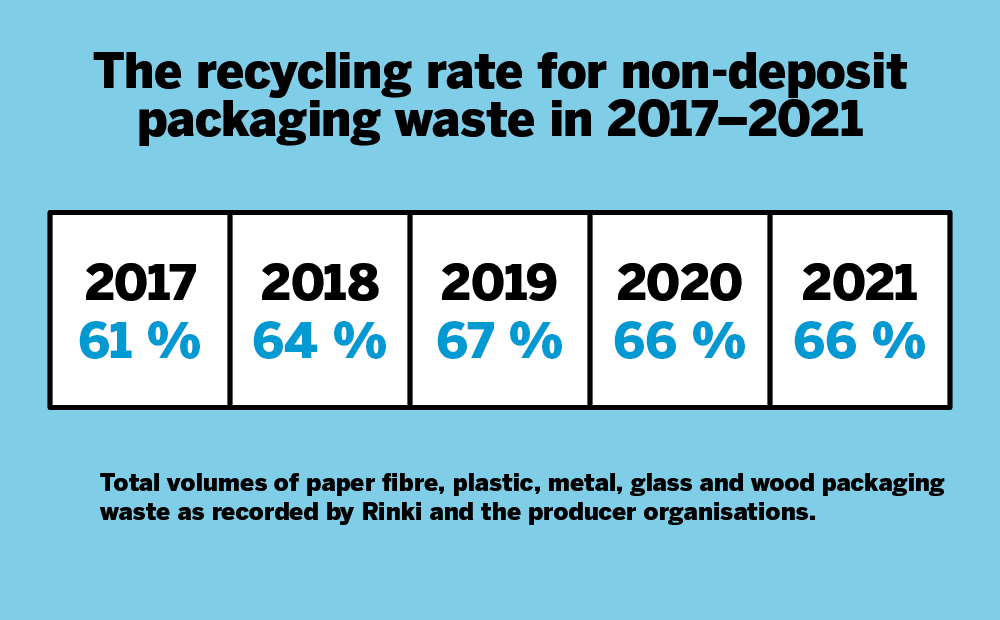Important figure: the calculation method became stricter, but the recycling rate for packaging waste did not plummet

In 2020, the recycling rate for packaging waste recorded by Rinki and producer organisations only decreased by one percentage point on the previous year (67% -> 66%), despite the fact that there were significant changes to the calculation method.
According to the new EU Directive, only packaging waste that ends up being reused, i.e. in new raw materials and products, is counted as recycled material. Rejects are now deducted from the total collected packaging waste. Rejects include packaging waste that cannot be recycled into new material due to its poor quality and other materials that should not have been placed in the collection containers. In Finland, these materials are utilised in energy production.
How is the recycling rate calculated?
The recycling rate is calculated by dividing the amount of packaging waste in a year by the amount of packaging material placed on the market that year. The volumes vary from year to year, which affects the recycling rate.
Excluding rejects from the rate initially reduced the recycling rate for plastic (35% -> 20%) and glass (100% -> 90%), whereas the recycling rates for paper fibre (116% -> 123%), metals (78% -> 79%) and wood (27% -> 28%) have continued to grow.
A new method for calculating packaging volumes has also been introduced
In 2020, the basis for calculating the volumes of packaging placed on the market changed along with the method used to calculate the recycling rate. For example, the total weight of liquid carton packaging was previously calculated as paper fibre. The carton and plastic used in packaging are now handled separately and counted in the total volume of each material.